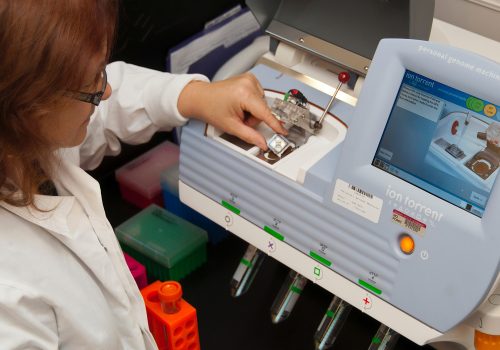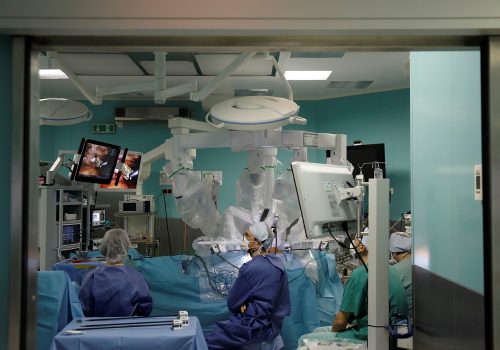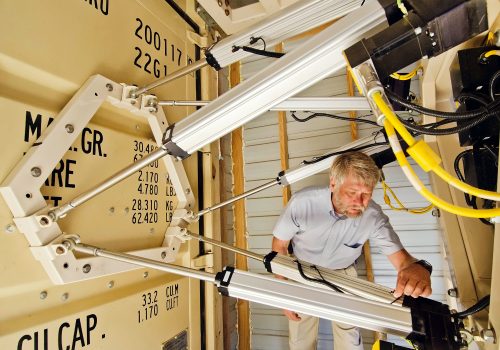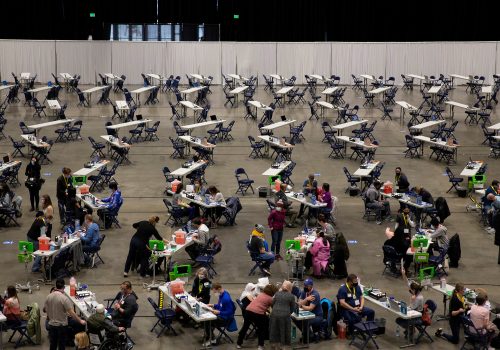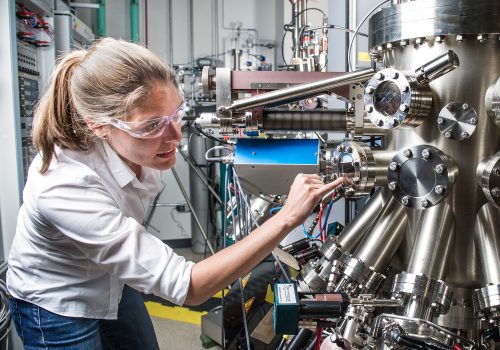Executive summary
The advancing speed, scale, and sophistication of new technologies and data capabilities that aid or disrupt our interconnected world are unprecedented. While generations have relied consistently on technologies and tools to improve societies, we now are in an era where new technologies and data reshape societies and geopolitics in novel and even unanticipated ways. As a result, governments, industries, and other stakeholders must work together to remain economically competitive, sustain social welfare and public safety, protect human rights and democratic processes, and preserve global peace and stability.
Emerging technologies also promise new abilities to make our increasingly fragile global society more resilient. To sustain this progress, nations must invest in research, expand their digital infrastructures, and increase digital literacy so that their people can compete and flourish in this new era. Yet, at the same time, no nation or international organization is able to keep pace with the appropriate governance structures needed to grapple with the complex and destabilizing dynamics of these emerging technologies. Governments, especially democratic governments, must work to build and sustain the trust in the algorithms, infrastructures, and systems that could underpin society. The world must now start to understand how technology and data interact with society and how to implement solutions that address these challenges and grasp these opportunities. Maintaining both economic and national security and resiliency requires new ways to develop and deploy critical and emerging technologies, cultivate the needed human capital, build trust in the digital fabric with which our world will be woven, and establish norms for international cooperation.
The Commission on the Geopolitical Impacts of New Technologies and Data (GeoTech Commission) was established by the Atlantic Council in response to these challenges and seeks to develop recommendations to achieve these strategic goals. Specifically, the GeoTech Commission examined how the United States, along with other nations and global stakeholders, can maintain science and technology (S&T) leadership, ensure the trustworthiness and resiliency of physical and software/informational technology (IT) supply chains and infrastructures, and improve global health protection and wellness. The GeoTech Commission identified key recommendations and practical steps forward for the US Congress, the presidential administration, executive branch agencies, private industry, academia, and like-minded nations.
The GeoTech Decade
Data capabilities and new technologies increasingly exacerbate social inequality and impact geopolitics, global competition, and global opportunities for collaboration. The coming decade—the “GeoTech Decade”—must address the sophisticated but potentially fragile systems that now connect people and nations, and incorporate resiliency as a necessary foundational pillar of modern life. Additionally, the rapidity of machines to make sense of large datasets and the speed of worldwide communications networks means that any event can escalate and cascade quickly across regions and borders—with the potential to further entrench economic inequities, widen disparities in access to adequate healthcare, as well as to hasten increased exploitation of the natural environment. The coming years also will present new avenues for criminals and terrorists to do harm; authoritarian nations to monitor, control, and oppress their people; and diplomatic disputes to escalate to armed conflict not just on land, sea, and in the air, but also in space and cyberspace.
Domestically and internationally, the United States must promote strategic initiatives that employ data and new technologies to amplify the ingenuity of people, diversity of talent, strength of democratic values, innovation of companies, and the reach of global partnerships.
Geopolitical impacts of new technologies and data collections
Critical technologies that will shape the GeoTech Decade—and in which the United States and its allies must maintain global S&T leadership—can be grouped into six areas. All technologies in these categories will have broad—and interdependent—effects on people and the way they live and work, on global safety and security, and on the health of people and our planet.
- Technologies that enable a digital economy: communications and networking, data science, and cloud computing: collectively provide the foundation for secure transmission of data for both the public and private sector and establish robust economies of ideas, resources, and talent.
- Technologies for intelligent systems: artificial intelligence, distributed sensors, edge computing, and the Internet of Things: add new capabilities for understanding changes in the world in both physical and digital environments. The resulting data may supplement human intelligence, social engagements, and other sources of insight and analysis. In select, defined areas, intelligent systems may enhance human governance of complex systems or decisions.
- Technologies for global health and wellness: biotechnologies, precision medicine, and genomic technologies: help create new fields of research, development, and practical solutions that promote healthy individuals and communities. Nations and health care organizations can use advances in genomics, or more broadly omics,1Omics technologies are primarily aimed at the universal detection of genes (genomics), mRNA (transcriptomics), proteins (proteomics), and metabolites (metabolomics) in a specific biological sample. to provide sentinel surveillance capabilities with respect to natural or weaponized pathogens. Sentinel surveillance2A sentinel surveillance system is used to obtain data about a particular disease that cannot be obtained through a passive system such as summarizing standard public health reports. Data collected in a well-designed sentinel system can be used to signal trends, identify outbreaks, and monitor disease burden, providing a rapid, economical alternative to other surveillance methods. Source: “Immunization Analysis and Insights,” World Health Organization, accessed March 19, 2021, https://www.who.int/teams/immunization-vaccines-and-biologicals/immunization-analysis-and-insights/surveillance/surveillance-for-vpds. can provide early detection, data about how a new element is appearing and growing, and information to guide our response.
- Technologies that enlarge where people, enterprises, and governments operate: space technologies, undersea technologies: commercial companies and nations around the world are deploying mega-constellations of satellites, or fleets of autonomous ocean platforms, with advanced, persistent surveillance and communications capabilities.
Large-scale Earth observation data is important for monitoring the world’s atmosphere, oceans, and climate as a foundation for understanding evolving health and environmental risks and increasing the economic efficiencies in transportation, agriculture, and supply chain robustness. - Technologies that augment human work: autonomous systems, robotics, and decentralized energy methods: collectively provide the foundation to do work in dangerous or hazardous environments without risk to human lives, while at the same time augmenting human teams, potentially prompting long-term dislocations in national workforces, and requiring additional workforce talent for new technology areas.
- Foundational technologies: quantum information science (QIS), nanotechnology, new materials for extreme environments, and advanced microelectronics: collectively provide the foundation for solving classes of computational problems, catalyzing next-generation manufacturing, setting standards, creating new ways to monitor the trustworthiness of digital and physical supply chains, as well as potentially presenting new challenges and opportunities to communications security that underpin effective governance and robust economies.
In addition to the technology itself, countries and organizations must learn to harness and protect the human element—by recruiting and upskilling workers with the needed skill sets for today and training the next generation with the right knowledge for tomorrow. There is great competition globally for digitally-skilled workers, and some countries or companies invest large amounts to develop or recruit this talent. When like-minded nations collaborate in S&T areas, the talent resources can produce greater benefits than possible otherwise. This requires governments to ensure their entire populations gain the needed digital literacy skills and have the means and opportunities to participate in the global digital economy. Making the whole greater than the sum of the parts represents the important global need for international collaboration.
The broad range of important S&T areas requires several forms of collaboration. In multiple key areas, such as QIS and advanced microelectronics, several nations already have significant government investments underway, and current results span a growing number of application areas. Collaborating on research and coordinating national investments among like-minded nations could benefit all participants. Fast-evolving technical capabilities, such as commercial space or autonomous systems, are supporting global industries that are developing and fielding new products. Effective collaboration relies on a broad ecosystem of domestic and foreign partners, including private sector entities. Collaboration will be limited in certain areas, for example, areas where, due to security considerations, the United States will develop capabilities in a self-reliant manner.
Summary of recommendations
To maintain national and economic security and competitiveness in the global economy, the United States and its allies must
- Continue to be preeminent in key technology areas,
- Take measures to ensure the trustworthiness and sustainability of the digital economy, the analog economy, and their infrastructures.
The GeoTech Commission provides recommendations in the following six areas for achieving these strategic objectives. A seventh area, the Future of Work, discusses ways to ensure the workforce acquires the skills needed for the digital economy, and that there is equitable access to opportunity.
To ensure that the United States and its allies remain the world leaders in S&T, the federal government, working with industry and stakeholders, should establish a set of prioritized strategic S&T objectives and align those objectives with specific timeframes. Additionally, the United States should establish a technology partnership among like-minded and democratic countries to coordinate actions around those objectives. The president and the US Congress should increase annual federal funding for research and development activities to secure US global leadership in critical new industries and technologies, with priorities determined for the largest impact challenges and gaps. To help people across the United States adapt to the realities of the future, the US government should establish programs to fund reskilling activities for workers displaced by changes brought about by the GeoTech Decade, seek new technologies and increase funding in support of efforts to close the broadband gap, and develop programs to improve the digital literacy of all Americans.
To strengthen cybersecurity, the administration should update the implementation plan for the National Cyber Strategy. The strategy should streamline how public and private sector entities monitor the security of their digital environments; encourage new networking, computing, and software designs that strengthen cyber defense; and raise priorities and activities for the cybersecurity of operational technology—the hardware and software that keeps equipment running—to match those of information technology.
In order to maintain the credibility of government and private industry, as well as to ensure prosperity, security, and stability in the coming data-driven epoch, the US government should establish new frameworks for data that incorporate security, accountability, auditability, transparency, and ethics. This means enacting measures that strengthen data privacy and security, establish transparency and ethics principles in how the government and private sector use data about people, and provide guidance on auditing how such data may be used.
To ensure that the United States remains attuned to threats and weaknesses in supply chains and critical systems that power its future, the US government should develop a federal mechanism to assess and prioritize the importance of specific supply chains and systems to the nation, considering physical as well as software/IT supply chains and systems. The government should develop procedures and allocate resources to achieve sufficient resiliency, based on these priorities, for supply chains and critical systems to ensure the economic and national security of the United States.
In order to protect the American people and environment from future threats, the US government should develop a global early warning system comprised of pandemic surveillance systems coupled with an early warning strategy, as well as a similar system aimed at providing early indicators of global environmental threats which could significantly impact the safety, security, and wellness of the nation.
The US government should foster the growth of the commercial US space industrial base and leverage the increasing capabilities of large commercial satellite constellations. This could increase space mission assurance and deterrence by eliminating mission critical, single-node vulnerabilities and distributing space operations across hosts, orbits, spectrum, and geography.
Table: Priority recommendations
Note: This table contains a subset of the full collection of recommendations.
Numbers refer to the recommendation sequence as discussed in the main chapters of the report.
Table of contents
Overview: Inflection points
Accelerating global connectedness—of people, supply chains, networks, economies, the environment, and other foundations of society—is changing how nations work together and compete. For example, the global spread of scientific and technology (S&T) knowledge has lessened the United States’ strategic advantage based on advanced technology. The global movement of people allows biological threats to spread worldwide, outpacing the world’s ability to respond. In the digital economy, the economic, governmental, and political parts of society are interconnected, with the potential for cybersecurity threats experienced in one context to reverberate in others.
This interconnectedness can lead to inflection points wherein current assumptions and practices are no longer valid or effective. Sources of strength or advantage can diminish. New vulnerabilities can be discovered, e.g., in global supply chains for hardware and software, and exploited. New approaches to protecting national interests in this globally connected world will rely, in many situations, on the cooperation and collaboration of like-minded nations to increase mutual knowledge and awareness. Without this focus, the detrimental aspects of globally connected systems and infrastructures will grow larger and become more urgent.
Each of the following areas is experiencing rapid change and each is critical for ensuring a secure and peaceful world. This overview discusses, for each chapter, the key issues, the opportunities and risks, and a characterization of what must be solved.
Chapter 1: Global science and technology leadership
The United States, with like-minded nations and partners, must collectively maintain continued leadership in key S&T areas to ensure national and economic security, and that technology is developed and deployed with democratic values and standards in mind. The United States must pursue, as strategic goals, establishing priorities, investments, standards, and rules for technology dissemination, developed across government, private industry, academia, and in collaboration with allies and partners. Collaboration among like-minded nations and partners is essential to the attainment of global S&T leadership.
Chapter 2: Secure data and communications
Sophisticated attacks on the software/information technology (IT) supply chains have led to significant breaches in the security of government and private networks, requiring a new strategy for cybersecurity. This centers on updating and renewing the National Cyber Strategy Implementation Plan with a focus on streamlining how public and private sector entities monitor their digital environments and exchange information about current threats. Beyond these current challenges, advances in quantum information science (QIS) lay the foundation for future approaches to securing data and communications, to include new ways to monitor the trustworthiness of digital and physical supply chains. With allies and partners, the United States should develop priority global initiatives that employ transformative QIS.
Chapter 3: Enhanced trust and confidence in the global digital economy
Diminished trust and confidence in the global digital economy can constrain growth;3Congressional Research Service, Digital Trade and U.S. Trade Policy, May 21, 2019, 11, accessed March 19, 2021, https://crsreports.congress.gov/product/pdf/R/R44565; in 2015, the Department of Commerce launched a Digital Economy Agenda, Alan B. Davidson, “The Commerce Department’s Digital Economy Agenda,” November 9, 2015, accessed March 19, 2021, https://2014-2017.commerce.gov/news/blog/2015/11/commerce-departments-digital-economy-agenda.html. This identifies four pillars: promoting a free and open Internet worldwide; promoting trust online; ensuring access for workers, families, and companies; and promoting innovation. have destabilizing effects on society, governments, and markets; and lessen resilience against cascading effects of local, regional, or national economic, security, or health instabilities. Trust and confidence are diminished by practices that do not protect privacy or secure data, and by a lack of legal and organizational governance to advance and enforce accountability.4Philippe Amon, “Toward a New Economy of Trust” in Revitalizing the Spirit of Bretton Woods: 50 Perspectives on the Future of the Global Economic System (Washington, DC: Bretton Woods Committee), July 2019, accessed March 19, 2021, https://www.brettonwoods.org/BW75/compendium-release. Automation and artificial intelligence (AI), essential for digital economies, pose challenges to how we organize and amplify the strength of both while minimizing their weakness or vulnerabilities in open societies. The United States should develop international standards and best practices for a trusted digital economy and should promote adherence to these standards.
Chapter 4: Assured supply chains and system resiliency
Both physical and digital supply chain vulnerabilities can have amplifying effects on the global economy and national security. To protect against these diverse risks requires understanding which types of goods and sectors of the economy are critical, and how to construct supply chains that are inherently more adaptable, resilient, and automated. This requires assessing the state and characteristics of supplies, trade networks and policies, inventory reserves, and the ability to substitute products or processing facilities. The United States should conduct regular assessments in the United States and in allied countries to determine critical supply chain resilience and trust, implement risk-based assurance measures, establish coordinated cybersecurity acquisition across government networks, and create more experts. A critical resource is semiconductor chip manufacturing, for which the vulnerability of foreign suppliers and the long lead time and cost of new production facilities requires the United States to invest in assured supply of semiconductor chips.
Chapter 5: Continuous global health protection and global wellness
Inherent to the disruption caused by the COVID-19 pandemic are three systemic problems: (i) global leaders acted slowly to contain the spread of the virus, (ii) global health organizations reacted slowly to contain the spread of the virus, and (iii) a mixture of factors caused the delayed response, including late recognition of the threat, slow incorporation of science and data into decision making, poor political will, and inconsistent messaging to citizens regarding the nature of the threat and what precautions to take. Though nations may adopt their own strategies to enhance resilience and future planning, a more global approach to this interconnected system will be essential. The United States and its allies should lead the effort to field and test new approaches that enable the world to accelerate the detection of biothreat agents, universalize treatment methods, and deploy mass remediation, through multiple global means. This is needed not only for recovering from the COVID-19 pandemic and future outbreaks, but also for human-developed pathogens.
Chapter 6: Assured space operations for public benefit
The world is transforming from space assets being dominated almost entirely by government to being largely dominated by the private sector.5Simonetta Di Pippo, “Space Technology and the Implementation of the 2030 Agenda,” UN Chronicle 55 (4) (January 2019): 61-63, accessed April 16, 2021, https://www.un.org/en/chronicle/article/space-technology-and-implementation-2030-agenda; Matt Weinzierl and Mehak Sarang, “The Commercial Space Age Is Here,” Harvard Business Review, February 12, 2021, accessed April 16, 2021, https://hbr.org/2021/02/the-commercial-space-age-is-here; Matt Weinzierl, “Space, the Final Economic Frontier,” Journal of Economic Perspectives 32 (2) (Spring 2018): 173-192, accessed April 16, 2021, https://www.hbs.edu/ris/Publication%20Files/jep.32.2.173_Space,%20the%20Final%20Economic%20Frontier_413bf24d-42e6-4cea-8cc5-a0d2f6fc6a70.pdf; KPMG, 30 Voices on 2030: The future of space: Communal, commercial, contested, May 2020, accessed April 16, 2021, https://assets.kpmg/content/dam/kpmg/au/pdf/2020/30-voices-on-2030-future-of-space.pdf. To maintain trusted, secure, and technically superior space operations, the United States must ensure it is a leading provider of needed space services and innovation in launch, on-board servicing, remote sensing, communications, and ground infrastructures. A robust commercial space industry not only enhances the resilience of the US national security space system by increasing space industrial base capacity, workforce, and responsiveness, but also advances a dynamic innovative environment that can bolster US competitiveness across existing industries, while facilitating the development of new ones. The United States should foster the development of commercial space technologies that can enhance national security space operations and improve agriculture, ocean exploration, and climate change activities, as well as align civilian and military operations and international treaties to support these uses.
Chapter 7: Future of work
People will power the GeoTech Decade, even as technology and data capabilities transform how people live, work, and operate as societies around the world. Successful societies will be those that found ways to augment human strengths with approaches to technology and data that were uplifting, while also working to minimize biases and other shortcomings of both humans and machines. Developing a digitally resilient workforce that can meet these challenges will require private and public sectors to take an all-of-the-above approach, embracing everything from traditional educational pathways to nontraditional avenues that include employer-led apprenticeships and mid-career upskilling. Ensuring that people are not left behind by the advance of technology—and that societies have the workforces they need to innovate and prosper—will determine whether the GeoTech Decade achieves its full promise of improving security and peace.
Appendices
The remainder of the report includes the following appendices that discuss the technical foundations and potential solutions for several important challenges:
- Appendix A. Additional readings on identifying and countering online misinformation
- Appendix B. Improving the software supply chains and system resiliency for the US government
- Appendix C. Advancing a data fabric for achieving continuous global health protection
- Appendix D. Additional readings on the history and future of global space governance
- Appendix E. Informational GeoTech Center synopses
Table: Summary of the GeoTech Commission’s findings and recommendations
Table: List of all recommendations of the Commission in abridged form
Click the sections under the table above to explore each chapter and their recommendations.







